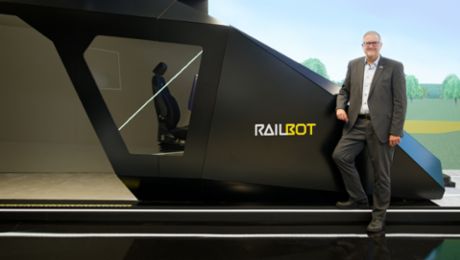As Global Director of Innovation at Puma, Romain Girard and his team are responsible for developing the tools that help athletes, from professionals to everyday movers, perform at their best. In this interview, he talks about how innovation at Puma starts with sport itself, why intuition still matters in the age of AI, and how technology developed for elite athletes can benefit everyone.
Many of Puma’s innovations are truly born from sport itself. How do ideas move from the athlete’s experience into real products or technologies at Puma?
Romain Girard: My job, and the job of my team, is to build the best possible tools from head to toe to help athletes perform at their best. Performing can mean enjoying what they do or pushing their limits, and our role is to enable that. Puma was created by Rudolf Dassler in 1948, and from the very beginning our DNA has been rooted in sport. That has never changed, even if people sometimes associate us with lifestyle or fashion. Our core, our roots, and our future are all about sport. The way we innovate is actually similar to how brands like Porsche work in motorsport. You have to invest at the top, push boundaries, experiment, and take risks. The lessons and technologies developed at the elite level then filter down into products for a wider audience. If you are not pioneering at the top, you become a follower, and followers rarely define brand value. We once did a simple test: we took the same football boot, painted it white, and replaced the logo with a swoosh, three stripes, and the Puma logo. The perceived value changed instantly, by about ten or fifteen euros. That shows how powerful brand equity is. Building innovation and brand strength must always go hand in hand.
When something at Puma hasn’t worked out as planned, what helped you and your team turn that situation into progress?
Girard: The key is always to understand the problem clearly. Data plays a big role here, but not in a way that replaces thinking. Data gives us the raw material; it tells us what is good, bad, or somewhere in between. We collect a lot of data, especially from our digital channels, but the real value comes from how we filter and interpret it. That is where AI helps. We see AI as a powerful filter that can process huge amounts of information very quickly and from many different perspectives. But defining the problem correctly is half the solution. Once we have that frame, we rely on people, their intuition, creativity, and teamwork, to find answers inside that frame. AI helps us set the boundaries, but humans fill the canvas. Sometimes people forget how strong human intuition can be. Birds know when winter is coming without anyone telling them. It is the same for us; intuition is built into who we are. At Puma, we try to balance data and technology with that human side, because that is where real innovation happens.
Puma is known for its entrepreneurial, curiosity-driven approach to innovation. How do you keep that mindset alive inside your teams, and how do you decide which ideas are worth pursuing?
Girard: We encourage our teams to be proactive and creative, but within meaningful boundaries. It is easy today to get caught up in digital hype, thinking AI can do everything. Our role as leaders is to guide younger colleagues, to help them prioritize and not lose focus. Innovation must make sense for the business. If a company does not perform, none of us will. So we set soft guardrails that keep creativity productive. People should still experiment and challenge things, but they also need to understand where real value lies. Entrepreneurship, for us, means being hands-on, curious, and accountable, always looking for better ways to serve athletes and consumers while staying true to our brand’s values.
Technologies developed for elite athletes often end up shaping everyday fitness and health. How does Puma ensure that its high-performance innovations also make a difference for people in their daily movement?
Girard: We work with athletes from many different sports, including very specific ones like 400-meter hurdles. Sometimes the value of working in such a niche is that you learn what not to do. When athletes operate at extreme levels, we learn a lot about biomechanics: how much force the body can handle, where stress builds up, and what happens when you push limits. Even if those insights do not directly translate into mass-market products, they help us understand how to design shoes and apparel that are healthy and safe for everyday use. It is less about technical transfer and more about behavioral understanding. The way a product interacts with the body is something we can scale down from elite to everyday performance. And of course, when one of our athletes wins a world title or sets a record, that also inspires trust. People believe what they see. Success on the track helps people believe in the innovation behind every Puma product. In the end, AI helps us frame the problem, but humans still paint the picture.





